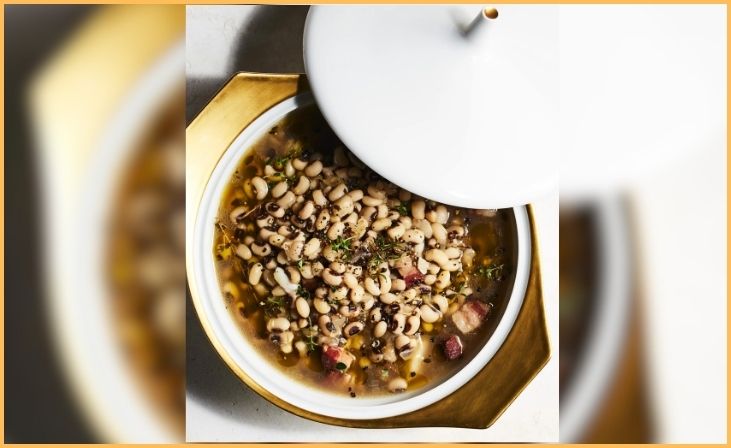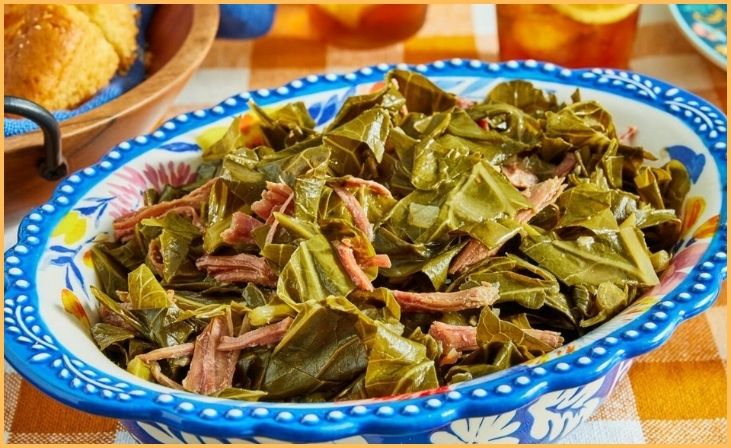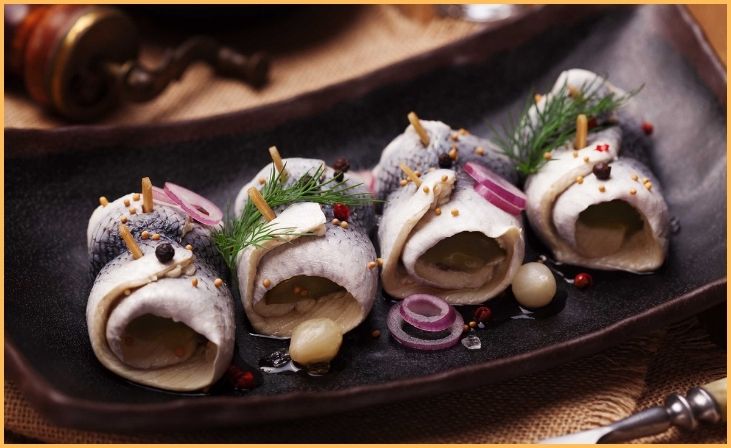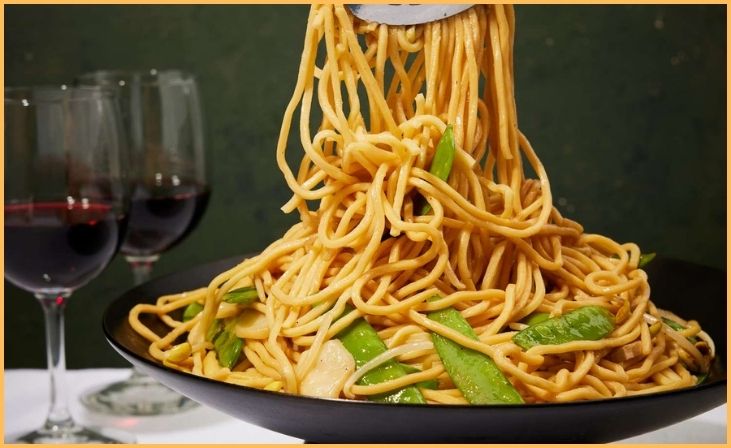Welcome to our blog post on 8 New Year’s food traditions that bring good luck. As the new year approaches, many cultures around the world have unique food traditions believed to bring good fortune and prosperity for the year ahead. In this article, we will explore some of these traditions and the foods associated with them.
From eating 12 grapes at midnight in Spain to consuming black-eyed peas in the United States, these food traditions vary across different countries and regions. Each tradition carries its own symbolism and significance. For example, lentils are often eaten in Italy as they resemble coins and are believed to bring financial prosperity.
Collard greens, soba noodles, and long noodles are also popular choices in various cultures. Collard greens represent wealth and are commonly eaten in the southern United States, while soba noodles in Japan symbolize longevity and are enjoyed on New Year’s Eve. In some Asian cultures, long noodles are eaten to symbolize a long and prosperous life.
Other traditions include eating round fruits, such as oranges or apples, which symbolize fullness and abundance. Pork is considered lucky in some cultures as it represents progress and moving forward. Fish is also a common choice as it symbolizes abundance and prosperity.
New Year’s Food Traditions Worldwide
The beginning of a new year is a time of reflection, resolutions, and, for many, the embrace of cultural traditions that promise good luck and prosperity. In this article, we explore eight New Year’s food traditions from around the world, each laden with symbolism and the hope for a fortuitous year ahead.
Quick Read: 8 Blue Zone Recipes That Could Help You Eat Better In The New Year
1. Black-Eyed Peas

In the Southern United States, particularly in states like Alabama, Georgia, and Mississippi, a beloved New Year’s tradition involves savoring black-eyed peas on January 1st. This culinary custom is deeply rooted in the belief that consuming black-eyed peas brings about prosperity and good luck for the upcoming year. Families gather around the table to enjoy dishes like Hoppin’ John, a flavorful combination of black-eyed peas, rice, and bacon or ham. Each pea is said to represent a coin, and by consuming them, individuals invite financial abundance into their lives.
This tradition has been passed down through generations, creating a sense of connection to both the past and the hope for a prosperous future. So, as the clock strikes midnight, many in the Southern U.S. indulge in this wholesome and symbolic dish, welcoming the New Year with the promise of good fortune and a table filled with traditional flavors.
2. Greens

Participating in the New Year’s tradition of consuming leafy greens, such as collard greens, kale, or cabbage, carries a symbolic significance tied to the aspiration for wealth and financial prosperity. The vibrant green hues of these vegetables bear a resemblance to money, and this visual parallel is believed to bring good fortune in the coming year. Families often prepare dishes like collard greens seasoned with ham hocks or cabbage cooked with flavorful additions.
As these nutritious greens grace the New Year’s table, the act is seen as an auspicious start, symbolizing the hope for economic success and abundance. This age-old tradition links the act of eating greens to the desire for financial well-being, creating a flavorful and meaningful connection between the dinner table and the pursuit of prosperity in the year ahead.
3. Pork

The consumption of pork on New Year’s Day holds a special place in many cultures, symbolizing good luck, progress, and prosperity. Whether served as succulent roast pork or flavorful ham, this tradition is deeply rooted in the belief that indulging in pork on the first day of the year brings positive momentum and financial well-being. The juicy and savory nature of pork is thought to represent the richness and abundance one hopes to experience in the coming months.
Families often gather around the table to enjoy this auspicious meat, creating a connection between the act of dining and the optimistic journey into the New Year. This time-honored practice of savoring pork on New Year’s Day serves as a delicious and meaningful way to usher in good luck and set a positive tone for the year ahead.
4. Round Fruits

In Filipino New Year’s Eve celebrations, the tradition of including round fruits like oranges, apples, or grapes is deeply rooted in the belief that these fruits symbolize completeness and bring good fortune. The round shape is associated with the idea of unity and abundance, making it a powerful symbol for the start of a new and prosperous year.
Families often display an array of round fruits on their tables, not only for their aesthetic appeal but also as a representation of the positivity and wholeness they hope to embrace in the coming year. This tradition reflects the cultural emphasis on attracting wealth and prosperity, creating a vibrant and auspicious atmosphere during the New Year’s festivities.
5. Fish

In several cultures, fish becomes the focal point of New Year’s Day celebrations, with its consumption symbolizing progress, abundance, and embarking on the journey into the new year with hope and positivity. The choice of fish for this tradition is often associated with its ability to swim forward, signifying moving forward into the future.
Additionally, fish is considered a source of prosperity and good fortune. Families may prepare various fish dishes, each carrying its own significance, to partake in this symbolic tradition, fostering an optimistic start to the upcoming year.
6. Long Noodles

Chinese New Year traditions introduce the custom of consuming long noodles on New Year’s Day as a symbol of longevity. It is considered highly auspicious to eat uncut noodles during this celebration, reflecting the deep-rooted desire for a life filled with longevity, health, and fulfillment.
The length of the noodles is believed to represent the extension of one’s life and the avoidance of cutting them signifies the wish for an uninterrupted and prosperous journey ahead. Families often prepare noodle dishes with various flavors and accompaniments, embracing this tradition with the anticipation of a vibrant and enduring life in the coming year.
7. Ring-shaped cakes or Bread

Certain cultures celebrate the New Year with the tradition of consuming ring-shaped cakes or bread, symbolizing the cyclical nature of time. This culinary custom carries a deep significance, representing the completion of one year’s cycle and the hopeful anticipation of what the new year holds. The circular shape of the cake or bread mirrors the continuous loop of time, emphasizing the interconnectedness of past, present, and future.
Families often share these festive treats, creating a symbolic gesture of unity and the shared journey into the upcoming year. The consumption of ring-shaped delicacies becomes a meaningful ritual, embracing the cyclical nature of life and the optimism associated with new beginnings.
Read More: 8 Brand-New Recipes To Try
8. Lentils

In Italian New Year’s traditions, lentils take the spotlight as a symbol of prosperity and good fortune in the coming year. The custom is deeply rooted in the resemblance of lentils to coins, with the belief that consuming them on New Year’s Day will attract financial abundance and positive outcomes. Families across Italy include lentils in their celebratory meals, often in hearty stews or soups, embracing this age-old practice to usher in economic well-being.
The act of eating lentils becomes a ritualistic gesture, intertwining culinary traditions with hopeful aspirations for a prosperous year ahead. This tradition reflects the cultural significance of food as more than sustenance, incorporating symbolic elements that carry wishes for wealth and success into the New Year.
Final Words
In conclusion, New Year’s food traditions that bring good luck are celebrated in various cultures around the world. These traditions often involve consuming specific foods that symbolize prosperity, abundance, and good fortune for the upcoming year.
From grapes in Spain to lentils in Italy, each food carries its own symbolism and significance. Whether it’s the belief in financial prosperity, longevity, or general well-being, these traditions add a touch of cultural richness to the New Year’s celebrations.
While these traditions are rooted in folklore and superstition, they also provide an opportunity to gather with loved ones and enjoy delicious meals together. Whether you choose to incorporate these traditions into your own New Year’s celebrations or simply appreciate the cultural significance, they can add a special touch to the start of a new year.
Remember, the most important aspect of New Year’s celebrations is to embrace the spirit of hope, joy, and togetherness. Whether you’re enjoying grapes, lentils, or any other lucky food, may the new year bring you happiness, good health, and prosperity.
FAQs
Eating specific foods on New Year’s Eve is often rooted in cultural traditions and superstitions believed to bring good luck and prosperity for the upcoming year.
Examples include eating 12 grapes in Spain, lentils in Italy, soba noodles in Japan, and pork in many cultures, each symbolizing different aspects of luck and fortune.
While many traditions have historical roots, they often blend symbolic meanings with cultural practices, creating a rich tapestry of rituals passed down through generations.
Absolutely! Many people adopt and adapt these traditions as a way to celebrate diversity, embrace positive symbolism, and enjoy delicious foods during the New Year festivities.

